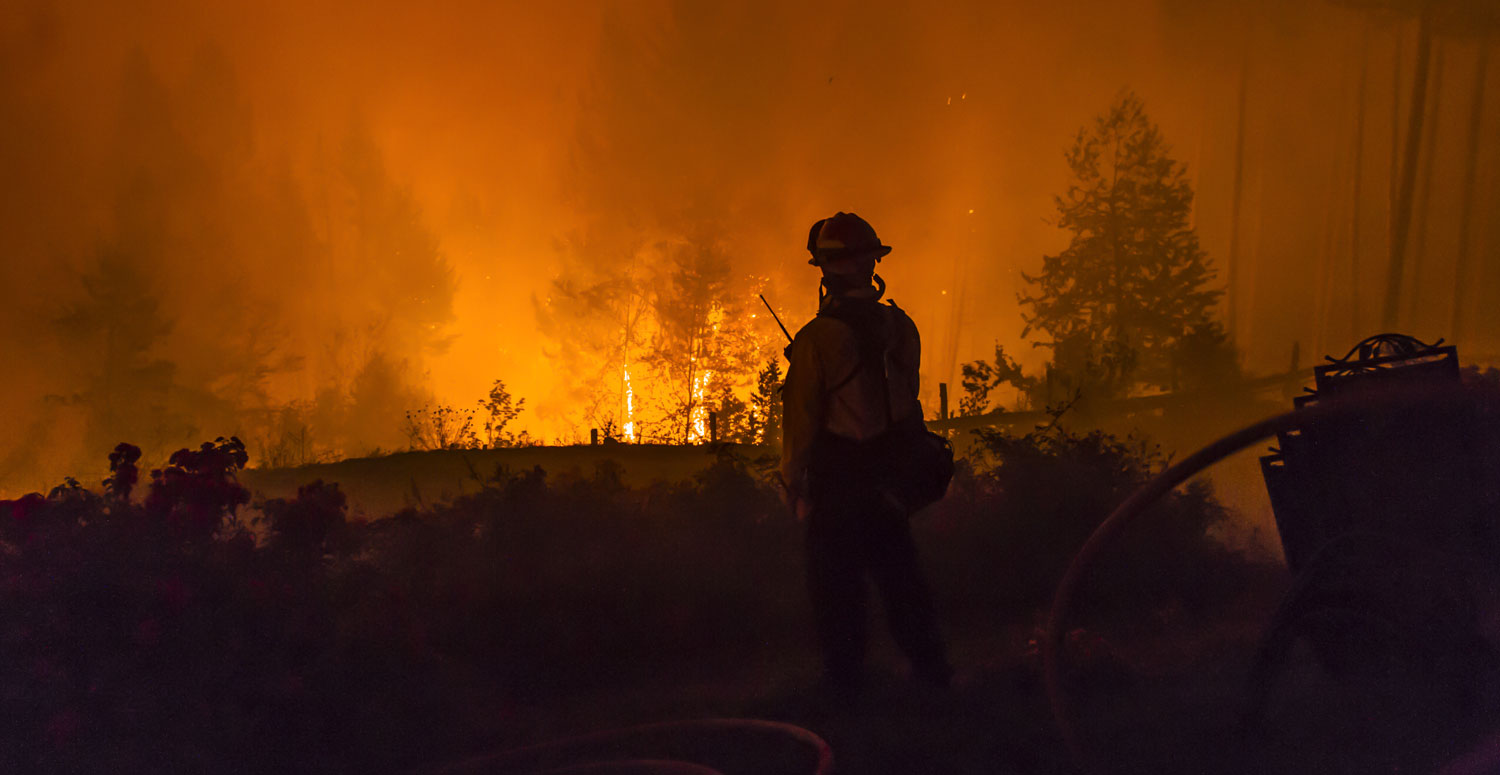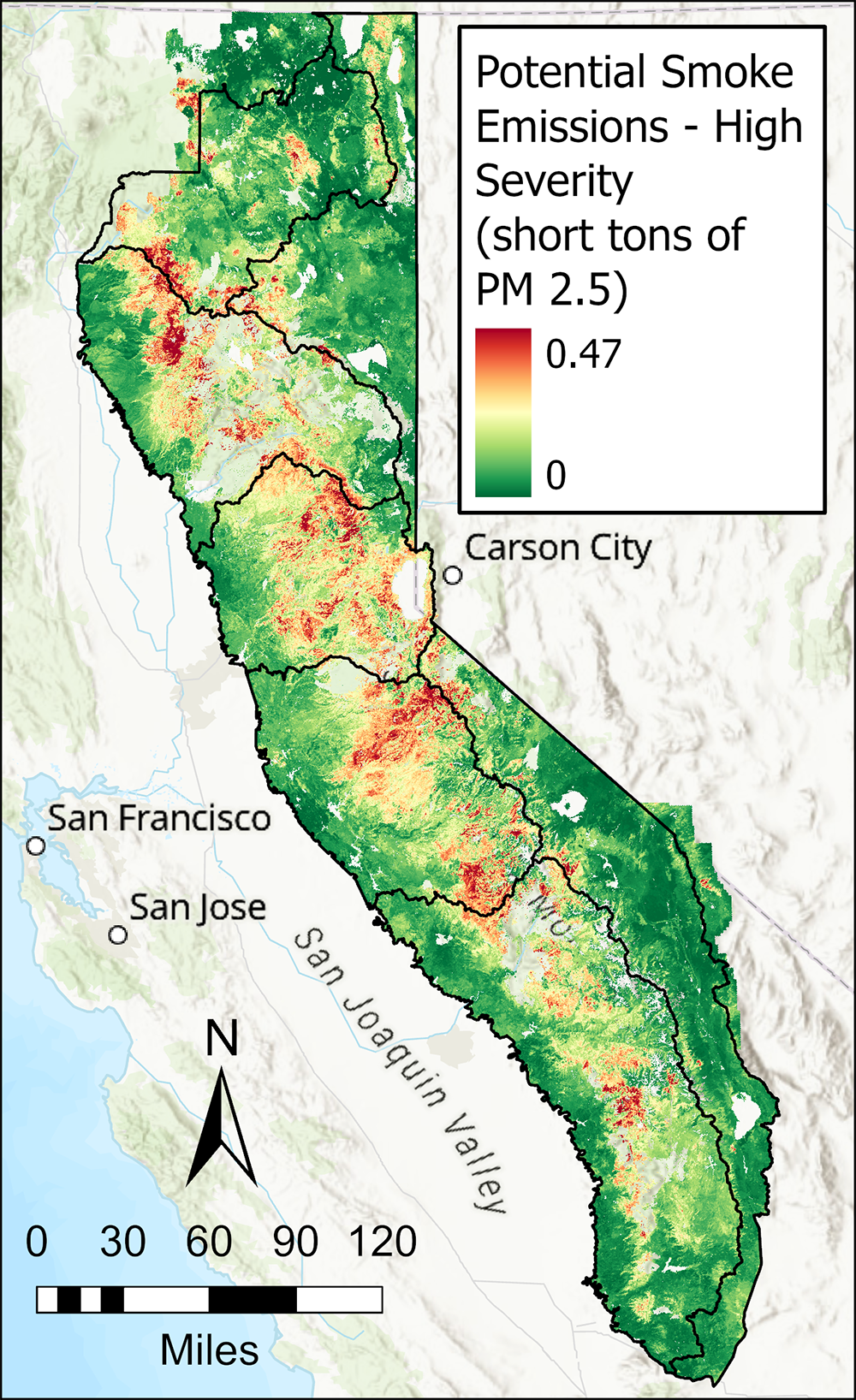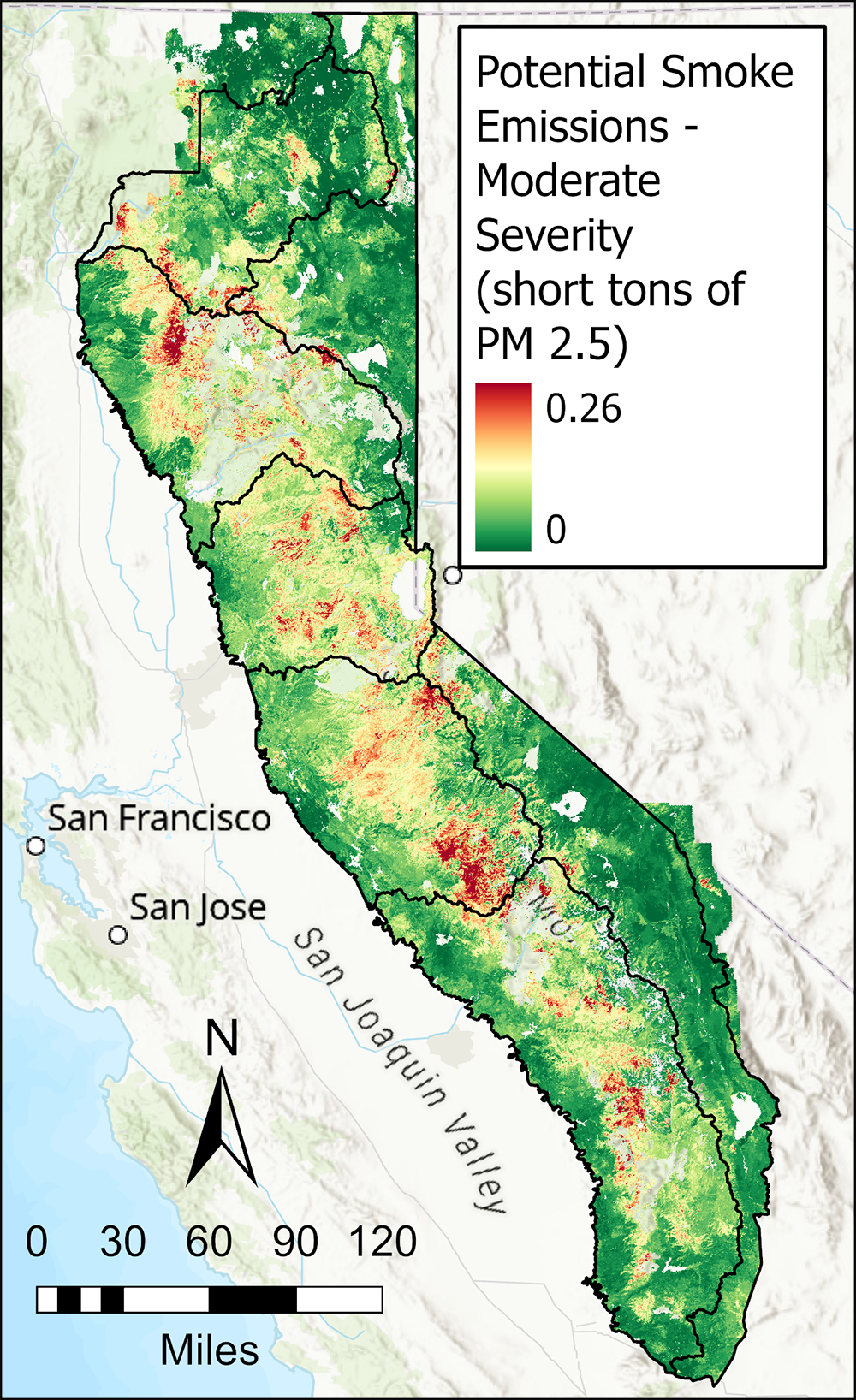Sierra Nevada Regional Profile
Air Quality

Overview
Smoke from wildfires can affect the air quality thousands of miles from the fire, presenting widespread risks to public health. The hazardous air pollutants in wildfire smoke may cause respiratory and cardiovascular illness and even premature death. In the Sierra region, these public health risks are compounded for communities in areas like the southern Sierra Nevada that are regularly exposed to high ozone levels and particulate-matter pollutants.
Poor air quality also has economic impacts unrelated to public health, especially in a region such as the Sierra Nevada which has an important tourism and outdoor recreation economy. Tourists may decide not to visit the region when air quality is poor and visibility of the landscape is reduced. Drops in visitation and recreation can have widespread and rippling consequences for the various businesses connected to these markets.
Reducing the risk of high-severity wildfires offers significant benefits to air quality. Restoring beneficial fire to the landscape via managed wildfire, cultural burning, and prescribed burning may reduce the risk of uncontrolled and catastrophic wildfire. Cultural burning is an important practice among many indigenous communities that was outlawed in the 19th century by European settlers and throughout the era of fire suppression. In addition to fuel reduction, cultural burning can encourage new growth of plants that provide important resources for humans and wildlife, restore nutrients in the soil, and other important co-benefits. Recognition of the additional benefits of cultural burning has facilitated increased support for tribal leadership and the incorporation of traditional ecological knowledge into land management.
Although beneficial, low-intensity fire can cause short-term negative impacts to air quality, fire that burns at lower intensity over smaller areas emit much less harmful pollutants than large, high-severity wildfires. Additionally, prescribed burn organizers and local air districts can collaborate to minimize air quality impacts by planning burns to occur during optimal weather conditions. They can also provide the public with advanced notice of planned burns. In contrast, catastrophic wildfire events not only ignite unpredictably, but they tend to occur in summer when ambient air quality is more degraded and heat waves are more likely, compounding the impacts of the smoke on local and regional populations.
In 2021, California legislators took steps to increase prescribed burning capacity. This included expanding liability protections for authorized individuals who conduct a prescribed burn, provided that they adhere to permitted conditions. This law was also significant because it included liability protection for cultural fire practitioners, affirming the rights of Tribal communities to conduct cultural burns. Legislation also established a prescribed fire claims fund to address the insurance barrier which was keeping communities from being able to conduct prescribed and cultural burns. However, the narrow windows of suitable weather conditions create significant logistical challenges to completing prescribed fire treatments. Additional creativity, tolerance for risk, and investment in skilled workforce, will be necessary to leverage this management tool against risk of catastrophic wildfires.
Stakeholder Perspectives
Fuel treatments that reduce the probability or scale of wildfire, whether mechanical or prescribed burning, were widely considered the most important areas of investment. Public access to clean air shelter and to health care during smoke events were also “moderately important.” Interviewees stressed the importance of significantly increasing use of prescribed burning and believed there were locations suitable for its application. However, many noted that doing so would require an increase in support from both the public and agency administrators. Achieving this would require changing both public perception and agency culture to make people more comfortable with managed fire and more tolerant of smoke. Interviewees noted lack of a workforce skilled in prescribed burning was a limiting factor. Building a prescribed fire training center to provide more training access to state and federal firefighting employees was one recommendation for increasing capacity.
Resource Conditions
Assessing potential smoke emissions from wildfire is a relevant metric of air quality for land managers in the Sierra.

The amount of small particles in the air expected to be emitted during high-severity fire (Map A) and moderate-severity fire (Map B) contributes to serious public health risks and negative environmental impacts.

Consequently, this metric is important for informing investments in reducing wildfire severity.
